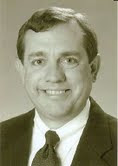Puzzles can be solved; they have answers.
But a mystery offers no such comfort. It poses a question that has no definitive answer because the answer is contingent; it depends on a future interaction of many factors, known and unknown. A mystery cannot be answered; it can only be framed, by identifying the critical factors and applying some sense of how they have interacted in the past and might interact in the future. A mystery is an attempt to define ambiguities.
Puzzles may be more satisfying, but the world increasingly offers us mysteries. Treating them as puzzles is like trying to solve the unsolvable—an impossible challenge. But approaching them as mysteries may make us more comfortable with the uncertainties of our age....
Puzzle-solving is frustrated by a lack of information. Given Washington's need to find out how many warheads Moscow's missiles carried, the United States billions of dollars on satellites and other data-collection systems. But puzzles are relatively stable. If a critical piece is missing one day, it
usually remains valuable the next.
By contrast, mysteries often grow out of too much information. Until the 9/11 hijackers actually boarded their airplanes, their plan was a mystery, the clues to which were buried in too much "noise"—too many threat scenarios. So warnings from FBI agents in Minneapolis and Phoenix went unexplored. The hijackers were able to hide in plain sight. After the attacks, they became a puzzle: it was easy to pick up their trail.
Solving puzzles is useful for detection. But framing mysteries is necessary for prevention.
For the mysteries of intelligence, measures of effectiveness are elusive. The goal of prevention is...nothing—an absence of attacks. But if no major terrorist attack occurs, does that represent the effectiveness of prevention, simple good luck or the fact that the threat was overstated in the first
place?
That's one uncertainty we'll have to learn to live with. There are others that framing mysteries can help us understand.
The author uses the above to illustrate, besides the difference in the Cold War and 911, the trials and tribulations of medicine to prevent disease, the Enron scandal, and discussions of energy; rightly pointing out that most energy analysis, particularly future oil supply and prices, treats the problem as a puzzle while it too is rightly a mystery, as least as he defines a mystery.
I think this distinction is useful in framing many situations such our discussions of global warming (definitely a mystery), proper public policy on taxes, trade, deficits and even onto how certain of our friends and family may react to given or predictable circumstances.
The entire article is a good, quick read.








No comments:
Post a Comment